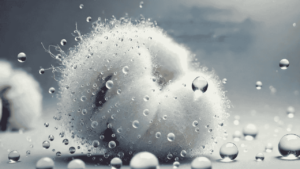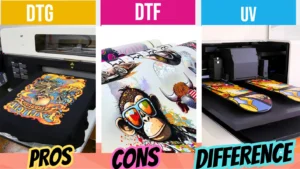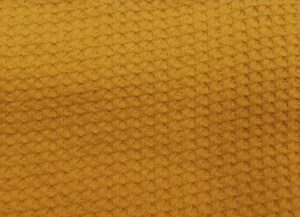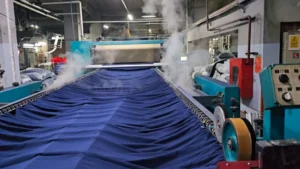The main differences between Direct-to-Garment (DTG), Direct-to-Film (DTF), and (UV) printing are the materials they work with, the types of ink they use, and the curing process.
Let’s explain all of them separately below with their Printing Method, Suitable Materials, Design Complexity, Production Requirements, Durability and Pros and Cons:
Direct-to-Garment (DTG):
Direct-to-garment printing (DTG) is a process of printing on textiles using specialized water-based ink jet technology.DTG printing is also known as digital apparel printing or D2 printing. DTG printing is especially popular for printing on cotton and cotton-blend garments.
Printing Method of DTG:
Direct-to-garment (DTG) printing is a digital printing method that uses a water-based inkjet printer to apply images and graphics directly onto fabric.. DTG printing is a process that allows you to print directly on fabric.
Suitable Materials for DTG:
DTG printing is best for natural fabrics like cotton(100%),cotton-blend fabrics,linen,wool and bamboo. Undoubtedly 100% cotton fabrics are the king. Because Cotton is an affordable, strong material that is soft to the touch. This fabric easily absorbs water-based inks allowing the design to adhere more easily to the fabric.
Design Complexity of DTG:
DTG is Excellent for detailed and colorful designs, High-resolution printing, great for detailed, full-color images.DTG printers can reproduce fine details accurately.For example, artistic t-shirts with watercolor.
Production Requirements:
There are some requirements that are essential for setting up a DTG production facility capable of producing high-quality, durable prints efficiently.These are
- DTG Printer
- Pre-Treatment Equipment
- Heat Press for Conveyor Dryer
- Ink, workstation
- Ventilation and RIP software.
Durability of DTG Printing:
Direct-to-garment (DTG) prints can be durable and long-lasting, especially with proper care.With proper care, DTG prints can last for over 50 washes.
Pros and Cons of DTG:
Direct-to-garment (DTG) printing has many advantages and disadvantages.
Pros:
DTG is ideal for High-resolution printing, great for detailed, full-color images,fast and eco friendly. Soft feel and durable finish, especially on cotton fabrics.
Cons:
Direct-to-garment (DTG) printing has some disadvantages, including printing time,material limitation,Learning curve,Initial investment,
Cost: DTG printing can be expensive, especially for larger orders or printing on dark shirts. The cost of equipment, ink, and other consumables can be high.Slower printing process, less efficient for high-volume orders.
Direct-to-Film (DTF):
DTF (Direct-to-Film printing) is a process that involves printing designs directly onto a special film, which is then transferred onto various materials using heat and pressure.DTF printing is a popular method for decorating garments.It produces detailed, vibrant designs that are durable.
Printing Method:
Direct-to-film (DTF) printing is a heat-transfer printing method.that involves the following steps:
1.Print the design
2.Apply powder
3.Cure the ink
4.Transfer the design and
5. Peel off the film.
Suitable Materials for DTF printing:
Direct-to-film (DTF) printing can be used on a variety of materials, including: Cotton, polyester, denim, nylon,Leather and blended fabrics.DTF printing is ideal for professional printing needs because it produces high quality, durable transfer iron-on images.
Design Complexity of DTF :
DTF printing is ideal for complex, full-color designs with intricate details.There are some things to consider when designing for DTF printing, including: Design balance, Print settings,Line thickness, Color combinations and File resolution.
DTF printing can produce full-color images in a single pass.
Production Requirements for DTF printer :
DTF printing is Versatile for various fabric types; suitable for small to medium batch sizes.Direct-to-film (DTF) printing requires a number of supplies and production considerations, including:
- DTF printer
- heat press machine
- curing oven
- Adhesive Powder
- powder shaker
- and RIP software.
Humidity and temperature: DTF printers work best in humidity levels around 50% or higher.And artwork lines should be at least 0.02 in (0.5 mm) thick.
Durability of DTF printing:
DTF prints can be durable and last for years with proper care.The durability depends on proper application and curing during the transfer process.DTF prints can last for 50 or more washes without significant quality degradation.
Pros and Cons of DTF:
Pros:
Direct-to-film (DTF) printing has many advantages, including: Versatility, Vibrant Colors,Durability,Cost-Effective for Small Runs, Sustainability.
Cons:
However, DTF printing also has some disadvantages,including:Complex Process
Environmental Concerns, Slower than other methods,Color limitations and others
Ultraviolet (UV) Printing :
UV printing is a high-tech digital printing technique that uses ultraviolet (UV) light to cure ink onto a variety of materials.UV printing can be used on a variety of non-fabric materials, including paper, metal, glass, wood and plastics. UV printing process allows for immediate drying and results in sharp, vibrant prints on a variety of surfaces.
Printing Method:
UV printing’s ability to instantly cure ink and its consistency with various substrates make it a versatile and efficient printing method for high-quality, durable prints. UV printing involves the following steps:
- Design Preparation
- Material Selection
- Printer Setup
- Apply ink and cure ink
- compatibility
- After-printing treatment
- Quality Check and
- Final Inspection and Packaging
Suitable Materials:
UV printing is suitable for huge materials, including: non-fabric materials, paper, metal, glass, wood, plastics, Foam Board,rubber,Ceramics.UV printing can also be used on canvas, stone, slate, tiles, vinyl, mobile phone cases, golf balls, pens & pencils, key rings, plastic cards and other so on.
Design Complexity:
Design complexity can impact the success of UV printing, particularly for spot UV printing.Its also ideal for complex, full-color designs with intricate details like DTG and DTF printing.For example, the texture of chocolate,of a football, of metal and tiles or tyres.
Production Requirements:
There are some requirements that are essential for UV printing. Including:
- Materials including UV ink and UV printer .
- Temperature: The suitable temperature for UV printing is 25–30°C. Because UV ink won’t adhere well in cooler temperatures.
- Artwork
- Pretreatment and post treatment
- Design Software
Each of these components plays a crucial role in achieving high-quality, durable prints through UV printing.
Durability:
UV prints are generally durable and can last for at least 2 years and up to five years or more with lamination without fading. Actually it depends on the conditions and care.
Pros and Cons of (UV) Printing:
Pros of (UV) Printing :
- Works on a wide range of rigid surfaces and even some flexible ones.
- High-quality, durable prints with vivid colors and fast drying times
- Suitable for creating layered or textured effects.
- It can last for at least 2 years and up to five years.
Cons of (UV) Printing:
- UV ink is more expensive than traditional ink
- Generally not suitable for garments
- Best suited for hard surfaces, which limits applications in apparel
- Higher equipment and maintenance costs.
- UV ink is poisonous.UV lamps emit ultraviolet light that can be harmful to the skin and eyes, so the printhead needs to be well cared for..

Which Printing Method Should You Choose?
Each printing method—DTG, DTF, and UV—has its strengths and limitations. If you’re focused on cotton-based apparel and intricate designs, DTG might be your best choice. If you need versatility across different fabrics, DTF is a strong option. And for printing on hard surfaces, UV is unmatched. By understanding these differences, you can make an informed choice that aligns with your business needs.




